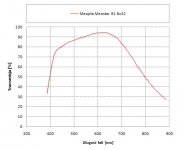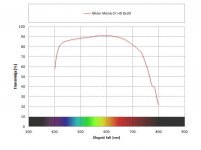Gijs van Ginkel
Well-known member
Dennis, post 40,
If you scan the different data, you can see that Meopta also has worked to improve their products. There is five years difference between the spectra you show in your post 34 (Meopta 8x32 from 2011)and the spectra of the updated 8x32 Meopta from 2016, they are also in the published data of House of Outdoor, but in another report and I have listed both together in a table . So, to answer your question: no the spectra are not dependent on my amount of sleep that day.
Gijs van Ginkel
If you scan the different data, you can see that Meopta also has worked to improve their products. There is five years difference between the spectra you show in your post 34 (Meopta 8x32 from 2011)and the spectra of the updated 8x32 Meopta from 2016, they are also in the published data of House of Outdoor, but in another report and I have listed both together in a table . So, to answer your question: no the spectra are not dependent on my amount of sleep that day.
Gijs van Ginkel







